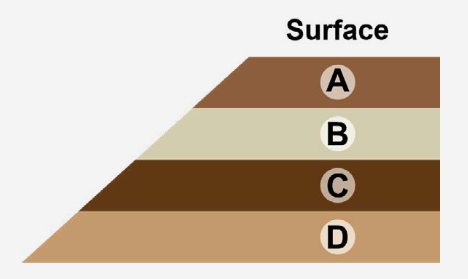We now want to spend some time looking at the evidence for evolution. So remember, we're talking about this idea of common descent, and that idea is that species share common ancestors. Well, how do scientists tell when species share a common ancestor? Well, we're going to really rely on this idea of homology. Homology is the idea that traits with similar underlying structures suggest common ancestry.
Alright. Now we're going to use the upper limb bones of tetrapods as an example, but the idea of homology spans all levels of biological organization. We can see homology in genetic sequences. We can see it in protein structure. We can see it in bones.
So let's take a look at this to really understand what we're talking about. Alright. Tetrapods. These are organisms that live on land and have a backbone. So these are all the reptiles, the amphibians, the birds, and the mammals. Well, if we look at the upper limb bones of any one of these organisms, you're going to see that they have very similar bone structure. Alright. Now here's an example. We show the limb structure of a whale, a frog, a horse, a lion, a human, and a bird.
Alright. Very different organisms here that use their limbs very, very differently. We have a whale where it's almost like a flipper. We have a horse that's very specialized for running, a human that can pick things up, and a bird that can fly. When you look at the bones though, they're really similar.
Right? We see this blue bone. They all start with this sort of big, heavy bone at the top, one bone that's the humerus. Then, we see these two bones running in parallel in a lot of them. That's the radius and the ulna.
And even the horse and the frog here, they only have one bone, but that bone starts as two bones that grow together. So really, all of these organisms start with a radius and an ulna, two parallel bones in that sort of forearm part of their arm. Well, then we get this little group of bones. Those in us are the wrist bones, the carpals, and then we get this series of sort of short, long bones, what in us are our hand and our finger bones. Why would these organisms with such different use for their limbs have such similar underlying structure?
Right? If you were to build these structures from scratch, you probably wouldn't use the same pieces to do it. But if these organisms share a common ancestor and that ancestor had that bone structure, well, remember we had this idea of descent with modification. That bone structure is sort of passed on, and that just sort of small changes to that are what happened. Right?
Evolution doesn't just sort of throw out a body plan and start over. It takes variation that is there, and it makes certain parts of that variation more common or less common. And so you end up with these really common traits that you can see through really large groups of organisms. All right. Well, that's the idea of homology.
We also need to then talk about analogy because analogy well, these are functionally similar traits with different evolutionary origins. And analogy can really sort of confuse the situation when you're trying to figure out how things are related. So for example, wings. Well, bees have wings. Birds have wings.
Bats have wings. But we don't think the common ancestor of birds, bees, and bats had wings. And when you look at these, well, it makes sense that the common ancestor didn't have that because these types of wings are structured really, really differently. They're built very differently. So analogy can confuse us when we're trying to figure out how things are related.
We need to put all our chips on the homology. Alright. Now if you need to remember these two words, remember homo? Well, that's Greek for meaning the same. And here, we're talking about the same structures in different organisms because those organisms have the same common ancestor.
Where ana in analogy well, remember Greek, the Greek ana means again, and these are traits that have evolved again and again from different evolutionary origins. All right. We're going to look at different types of homology. More coming up, and I suggest you check it out.


